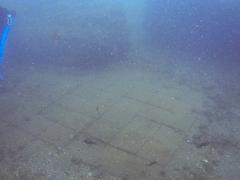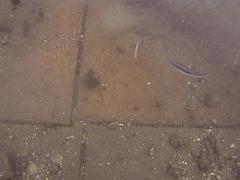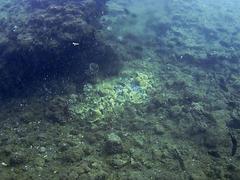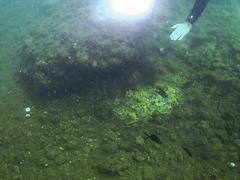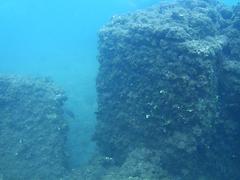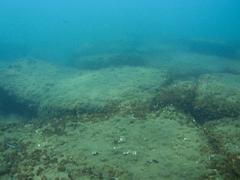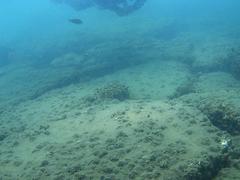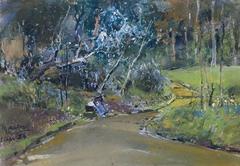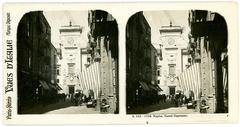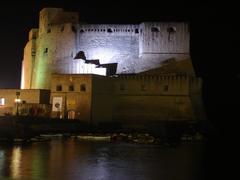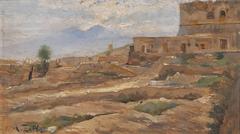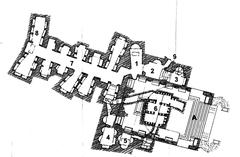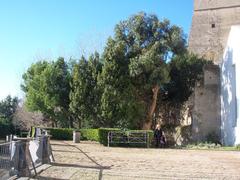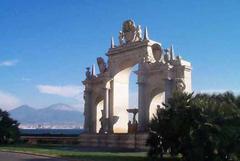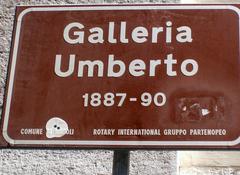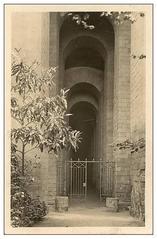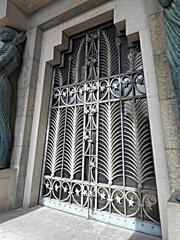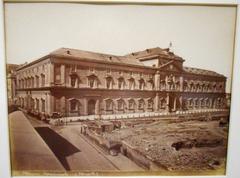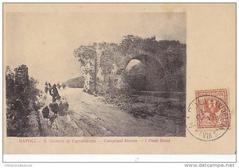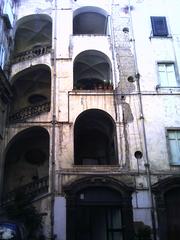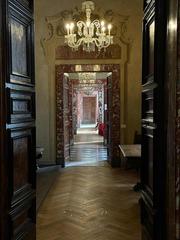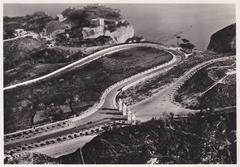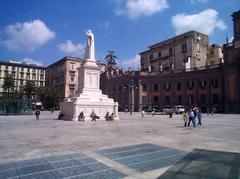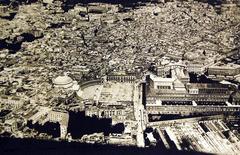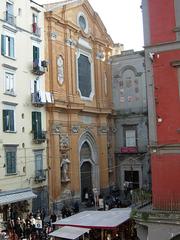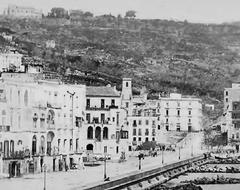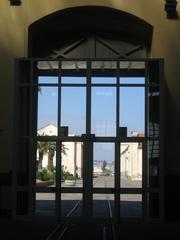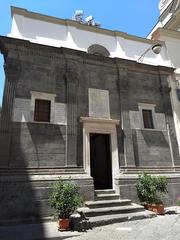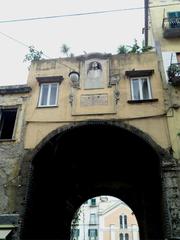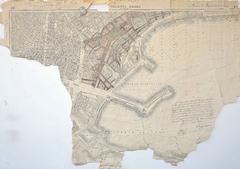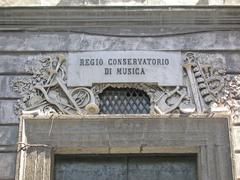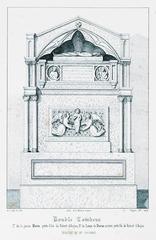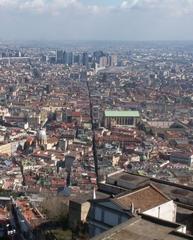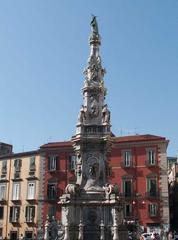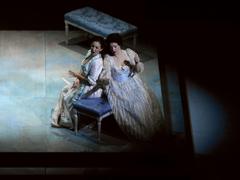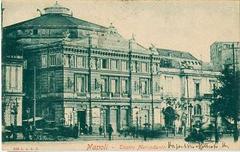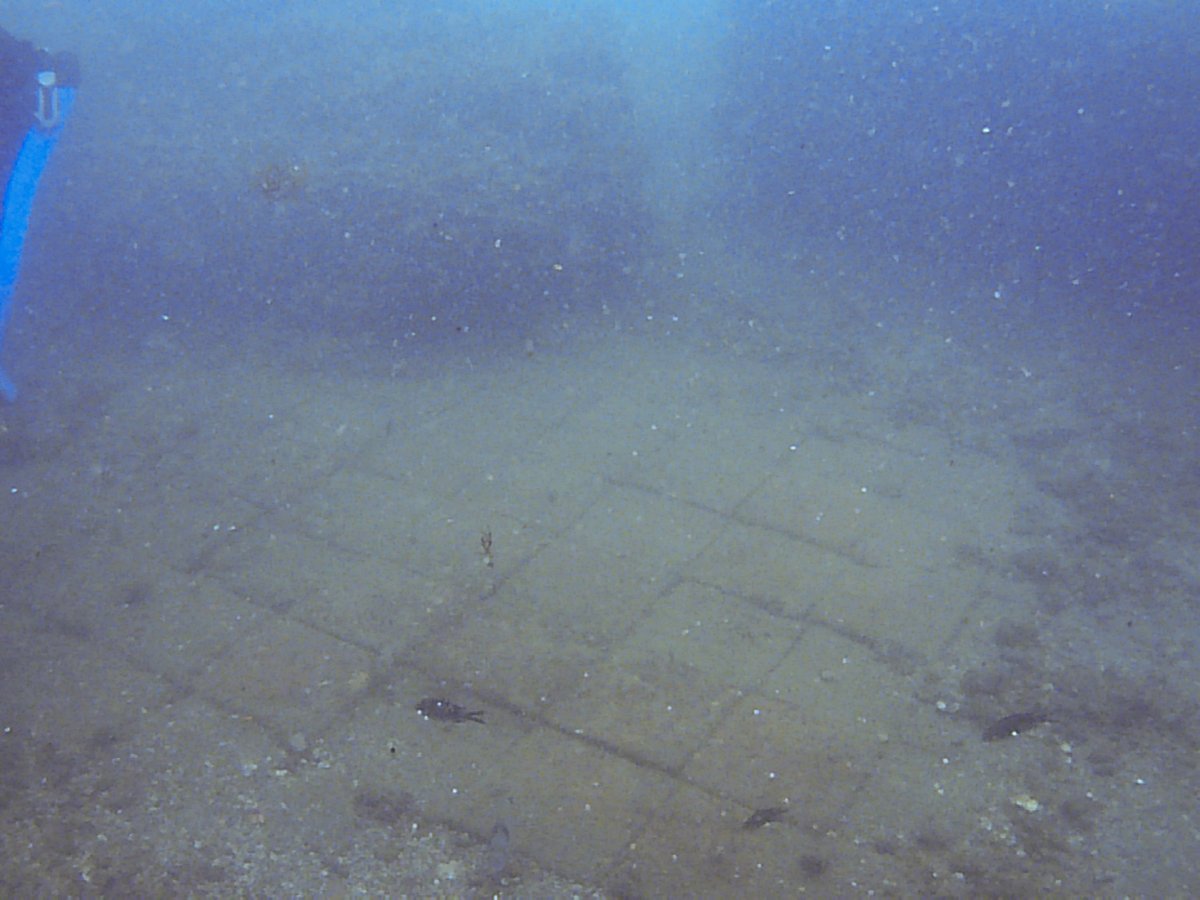
Comprehensive Guide to Visiting Ninfeo, Naples, Italy
Date: 23/07/2024
Introduction
Nestled in the heart of Naples, Italy, the Ninfeo, also known as the Nymphaeum, stands as a remarkable testament to the city’s rich cultural and historical tapestry. This ancient Roman monument, dedicated to the nymphs, exudes a blend of natural beauty and architectural ingenuity that dates back to the 1st century AD. Often found in public gardens or private villas, the Nymphaeum served as a sanctuary of relaxation and worship, reflecting the Roman people’s deep reverence for nature and mythology. The Ninfeo in Naples is a prime example of such a structure, combining intricate mosaics, frescoes, and water features that create a serene and immersive environment. Over centuries, it has undergone numerous transformations, mirroring the evolving political and cultural landscape of the region. Today, it stands not only as a historical monument but also as a vital link to Naples’ illustrious past, drawing scholars, historians, and tourists alike.
For visitors, the Ninfeo offers a captivating journey into ancient Rome, with guided tours that provide in-depth explanations of its architectural features, historical context, and archaeological discoveries. Located within the Villa Comunale, a large public park established in the late 18th century, the Ninfeo is surrounded by other notable attractions such as the Aquarium of Naples and the Church of Santa Maria della Catena. This guide aims to provide comprehensive information on visiting the Ninfeo, including practical tips, nearby attractions, and frequently asked questions, ensuring a memorable and enriching experience for all who venture to explore this historical gem (Museo Archeologico Nazionale di Napoli, Castel dell’Ovo, Visit Naples).
Table of Contents
Discovering the Ninfeo in Naples
Historical Background
Origins and Early History
The Ninfeo, or Nymphaeum, in Naples, Italy, is a testament to the city’s rich historical tapestry. The term “Nymphaeum” refers to a monument dedicated to the nymphs, often associated with water and natural springs in ancient Greek and Roman cultures. The origins of the Ninfeo in Naples can be traced back to the Roman period, specifically around the 1st century AD. This era was marked by the construction of grand architectural structures that served both practical and aesthetic purposes.
Roman Nymphaea were typically elaborate grottoes or sanctuaries featuring fountains, statues, and intricate mosaics. They were often located in public gardens or private villas, serving as places of relaxation and worship. The Ninfeo in Naples is believed to have been part of a larger complex, possibly a villa or a public bath, reflecting the Roman emphasis on leisure and the integration of natural elements into urban spaces.
Architectural Significance
The architectural design of the Ninfeo in Naples showcases the ingenuity and artistic prowess of Roman engineers and artisans. The structure is characterized by its semi-circular or apsidal shape, a common feature in Roman nymphaea. This design not only provided a visually appealing backdrop for the water features but also enhanced the acoustics, creating a serene and immersive environment.
One of the most striking aspects of the Ninfeo is its use of opus reticulatum, a distinctive Roman construction technique involving diamond-shaped bricks arranged in a net-like pattern. This method was not only aesthetically pleasing but also provided structural stability. The walls of the Ninfeo were often adorned with intricate mosaics and frescoes depicting mythological scenes, marine life, and floral motifs, reflecting the Romans’ reverence for nature and mythology.
Historical Transformations
Over the centuries, the Ninfeo in Naples underwent several transformations, reflecting the changing political and cultural landscape of the region. During the Byzantine period, the structure may have been repurposed for religious or administrative functions, as was common with many Roman buildings. The arrival of the Normans in the 11th century brought further changes, with the Ninfeo possibly serving as a fortified structure or a residence for the local nobility.
The Renaissance period saw a renewed interest in classical antiquity, leading to the restoration and preservation of many ancient monuments, including the Ninfeo. This era also witnessed the addition of new artistic elements, such as sculptures and decorative fountains, inspired by the classical Roman style. The Baroque period, characterized by its exuberant and ornate artistic expression, further enriched the Ninfeo with elaborate stucco work and grandiose water features.
Archaeological Discoveries
The archaeological exploration of the Ninfeo in Naples has provided valuable insights into the city’s ancient past. Excavations conducted in the 19th and 20th centuries revealed a wealth of artifacts, including pottery, coins, and sculptures, shedding light on the daily life and cultural practices of the Roman inhabitants. Notable discoveries include a series of marble statues depicting nymphs and deities, which are now housed in the National Archaeological Museum of Naples (Museo Archeologico Nazionale di Napoli).
One of the most significant finds was a well-preserved mosaic floor, featuring intricate geometric patterns and vibrant colors. This mosaic, believed to date back to the 2nd century AD, provides a glimpse into the artistic techniques and aesthetic preferences of the Roman period. The discovery of an underground aqueduct system connected to the Ninfeo highlights the advanced engineering skills of the Romans, who were adept at harnessing and managing water resources.
Cultural and Historical Impact
The Ninfeo in Naples holds immense cultural and historical significance, serving as a symbol of the city’s rich heritage and its enduring connection to the ancient world. The structure stands as a testament to the Roman Empire’s architectural and engineering achievements, as well as its cultural and artistic legacy. The preservation and restoration efforts undertaken over the years reflect the importance of safeguarding such historical monuments for future generations.
The Ninfeo also plays a crucial role in the cultural identity of Naples, serving as a reminder of the city’s illustrious past and its contributions to the broader Mediterranean civilization. The site attracts scholars, historians, and tourists alike, offering a unique opportunity to explore and appreciate the ancient heritage of Naples. The ongoing archaeological research and conservation efforts continue to uncover new aspects of the Ninfeo’s history, enriching our understanding of this remarkable monument.
Visitor Experience
For visitors to Naples, the Ninfeo offers a captivating journey into the past, providing a tangible connection to the ancient Roman world. The site is accessible to the public, with guided tours available to enhance the visitor experience. These tours often include detailed explanations of the architectural features, historical context, and archaeological discoveries, allowing visitors to fully appreciate the significance of the Ninfeo.
Visiting Information
- Visiting Hours: The Ninfeo is open to the public from Tuesday to Sunday, 9:00 AM to 5:00 PM. It is closed on Mondays and public holidays.
- Tickets: General admission tickets are €10 for adults, with discounts available for students, seniors, and groups. Children under 12 can enter for free.
- Accessibility: The site is partially accessible to visitors with mobility issues. It is recommended to contact the site in advance to arrange any necessary accommodations.
Nearby Attractions
To make the most of their visit, tourists are encouraged to explore the surrounding area, which is rich in historical and cultural landmarks. The nearby Castel dell’Ovo (Castel dell’Ovo), a medieval fortress with stunning views of the Bay of Naples, and the historic center of Naples, a UNESCO World Heritage site, offer additional insights into the city’s diverse heritage. Visitors can also enjoy the vibrant local culture, with its renowned cuisine, lively markets, and traditional festivals, making their trip to Naples a truly memorable experience.
Practical Visitor Tips
Best Time to Visit
Ninfeo is best visited during the spring (April to June) and fall (September to October) seasons. During these periods, the weather is mild and pleasant, making it ideal for exploring the historical and cultural sites. The summer months (July and August) can be quite hot and crowded, while the winter months (December to February) are cooler and less crowded but may have more rain.
Getting There
Ninfeo is easily accessible from various parts of Naples. The nearest major transportation hub is the Naples Central Station (Stazione di Napoli Centrale), which is well-connected by trains from other Italian cities. From the station, you can take a taxi or use public transportation to reach Ninfeo. The Naples Metro Line 1 and several bus routes serve the area. For detailed public transportation routes and schedules, visit the Naples public transportation website.
Entrance Fees and Hours
The entrance to Ninfeo is typically free, but it is advisable to check for any special exhibitions or events that might have an entry fee. The site is generally open from 9:00 AM to 7:00 PM, but these hours can vary, especially on holidays. For the most up-to-date information, refer to the official Naples tourism website.
Guided Tours
For a more enriching experience, consider joining a guided tour. These tours often provide in-depth historical context and interesting anecdotes that you might miss on a self-guided visit. Several local tour operators offer guided tours in multiple languages. You can book these tours online through platforms like Viator or GetYourGuide.
What to Wear
Comfortable walking shoes are a must, as you will likely be doing a lot of walking on uneven surfaces. Lightweight, breathable clothing is recommended during the warmer months, while a light jacket or sweater is advisable for the cooler months. Don’t forget to bring a hat, sunglasses, and sunscreen to protect yourself from the sun.
Photography
Photography is generally allowed at Ninfeo, but it is always good practice to check for any specific restrictions, especially in areas with delicate artifacts or during special exhibitions. Tripods and flash photography may be prohibited. For professional photography or filming, you may need to obtain special permission from the site authorities.
Dining Options
Naples is famous for its culinary delights, and there are numerous dining options near Ninfeo. From traditional Neapolitan pizza to fresh seafood, you will find a variety of restaurants and cafes to suit your taste. Some popular nearby eateries include Pizzeria Da Michele, known for its classic Margherita pizza, and Trattoria da Nennella, which offers a range of traditional Neapolitan dishes. For more dining recommendations, check out TripAdvisor.
Safety Tips
Naples is generally safe for tourists, but it is always wise to stay vigilant, especially in crowded areas. Keep your belongings secure and be aware of your surroundings. Avoid displaying valuable items like expensive jewelry or large amounts of cash. It is also advisable to carry a copy of your passport and keep the original in a safe place.
Accessibility
Ninfeo is partially accessible to visitors with mobility issues. While some areas may have uneven terrain or steps, efforts have been made to improve accessibility. It is recommended to contact the site in advance to inquire about specific accessibility features and services. For more information on accessibility in Naples, visit the Accessible Italy website.
Language
While Italian is the primary language spoken in Naples, many people in the tourism industry speak English. It is always helpful to learn a few basic Italian phrases, such as “Grazie” (Thank you) and “Per favore” (Please), to enhance your experience and show respect for the local culture.
Currency and Payments
The currency used in Naples is the Euro (€). Credit and debit cards are widely accepted, but it is always a good idea to carry some cash for small purchases or in case you visit places that do not accept cards. ATMs are readily available throughout the city.
Emergency Contacts
In case of an emergency, the following numbers are essential:
- Police: 112
- Ambulance: 118
- Fire Department: 115
It is also advisable to have the contact information of your country’s embassy or consulate in Naples.
FAQ
- What are the visiting hours for the Ninfeo in Naples?
- The Ninfeo is open from Tuesday to Sunday, 9:00 AM to 5:00 PM, and is closed on Mondays and public holidays.
- How much are tickets to visit the Ninfeo?
- General admission tickets are €10 for adults, with discounts for students, seniors, and groups. Children under 12 can enter for free.
- What are the best nearby attractions in Naples?
- Nearby attractions include the Castel dell’Ovo, the historic center of Naples, and the National Archaeological Museum of Naples.
Conclusion
The Ninfeo in Naples is more than just a historical monument; it is a portal to the ancient world and a testament to the city’s rich cultural heritage. Whether you are a history enthusiast, an architectural aficionado, or a curious traveler, the Ninfeo offers a unique and enriching experience. Be sure to include this remarkable site in your itinerary and immerse yourself in the timeless beauty and history of Naples.
For more information and updates, be sure to explore related posts, download the Audiala app, or follow us on social media (Museo Archeologico Nazionale di Napoli, Castel dell’Ovo, Visit Naples, Viator, GetYourGuide, TripAdvisor, UNESCO World Heritage, Accessible Italy).
References
- Discovering the Ninfeo in Naples - Visiting Hours, Tickets, and Historical Insights, 2024, Author https://www.museoarcheologiconapoli.it/en/
- Discovering Ninfeo Villa Comunale - Visiting Hours, Tickets, and Key Attractions in Naples, 2024, Author https://www.naplesnaples.com/castel-dell-ovo/
- Essential Visitor Tips for Ninfeo in Naples, Italy - Best Time, Tickets, and More, 2024, Author https://www.visitnaples.eu/
